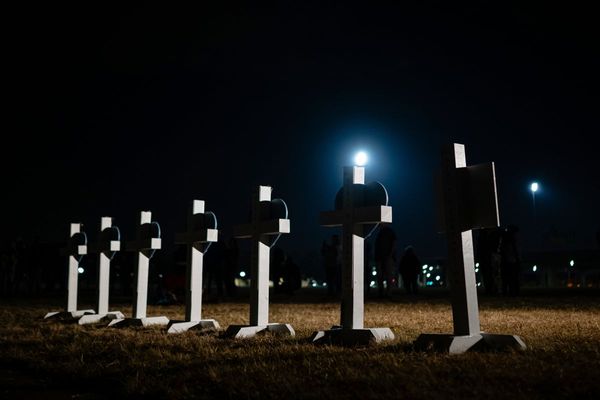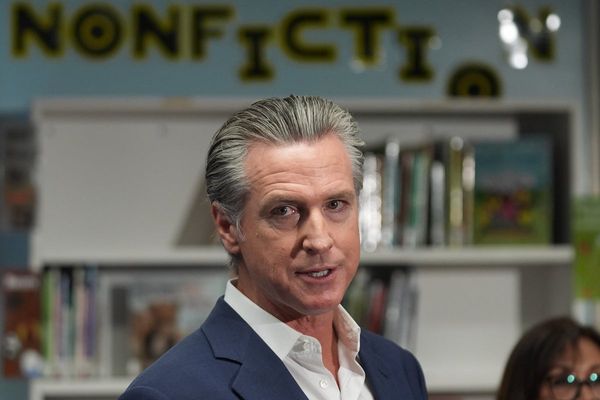
People often discuss different ways to live: a new diet here, a behavioural change there, perhaps some added spiritual dimension to help one through the maelstrom of existence. But what about new ways to die? The latest film from multi-hyphenate artist Lynette Wallworth – whose eclectic oeuvre includes documentaries, video installations and virtual-reality productions – attempts a difficult task: linking the reality of death to the idea of new possibilities, maybe even new beginnings. Not in terms of an afterlife: the core idea is more about how improving the process of dying might also improve how we live.
Edge of Life explores the medical use of psychedelics in palliative care – particularly psilocybin, a psychoactive compound found in magic mushrooms. Research into psychedelics in psychology and psychiatry has surged in recent years, and the film highlights one small part of this: an Australian-first clinical trial conducted at Melbourne’s St Vincent’s hospital by Dr Justin Dwyer and Dr Margaret Ross, who feature prominently.
Early in the run time, Dwyer counters the common assumption that his job must be depressing: in fact, he says, “it’s the most life-affirming environment I’ve ever worked in, because it’s all about living”. He notes that he and Ross administer medicine that primarily makes people feel “more sleepy and more quiet”, rather than addressing their underlying fears or uncertainties. He went to school for 20 years, he says, and “learned nothing about how to die”.
This is partly what drew the pair first to psilocybin, and then to conversations with Amazonian and Maya shamans who have used psychedelics in cultural practices for centuries. After we follow the journeys of several trial participants, including Flavia and Ros, identified only by their first names, Dwyer and Ross decide they should also have a psychedelic experience to inform their work. They take Wallworth up on an offer to travel to the Amazon and drink ayahuasca, guided by Muka Yawanawa, a shaman of the Yawanawá people – a community Wallworth previously collaborated with in her VR documentary Awavena.
The Yawanawá perspective is threaded throughout the film, which opens with visions of the camera drifting along the Amazon’s Gregório River then into the sky, accompanied by a voiceover from Yawanawa, reflecting on ancient stories and prophecies. Wallworth is drawn to bodies of water – perhaps the most potent images of cleansing and renewal – and weaves in some beautiful aesthetic flourishes. I loved a partly animated, part live-action image of a woman standing on a rock at the ocean’s edge, hands outstretched, a painted tree shimmering on the horizon, pulsing with bursts of colour, as if powered by an otherworldly current.
Several of the subjects – including Dwyer, Ros and Dr Chris Kerr, who runs New York’s Buffalo hospice palliative care – are grounded, learned professionals, not the sort of people one associates with airy mystics. This helps dispel any sense that the film has its head in the clouds. At one point Dwyer notes that he’s never been a remotely spiritual person; at another, Kerr mentions his “natural discomfort” with “the woo-woo”. He also observes that ideas about dying appear across almost every culture, from the Bible to Plato and various indigenous traditions.
I would have liked to learn more about how other cultures use psychedelics to help people understand death and dying, or simply more approaches to the subject. But Wallworth already has many elements to balance and various people tugging at the story from different directions – including, of course, the trial participants, whose journeys are best left for them to share in their own words.
Wallworth acknowledges the strangeness of a subject this universal and yet in many ways rarely discussed in terms of how we might improve, enrich and grow from it. At the same time the film notes that these sorts of ideas are hardly new, treating them as lost rather than undiscovered knowledge. Edge of Life really is about new possibilities, born at the crossroads of science, ancient practice and a renewed willingness to reconsider the dying process – and how these insights might inform the way we live.
Edge of Life is in select cinemas across Australia







